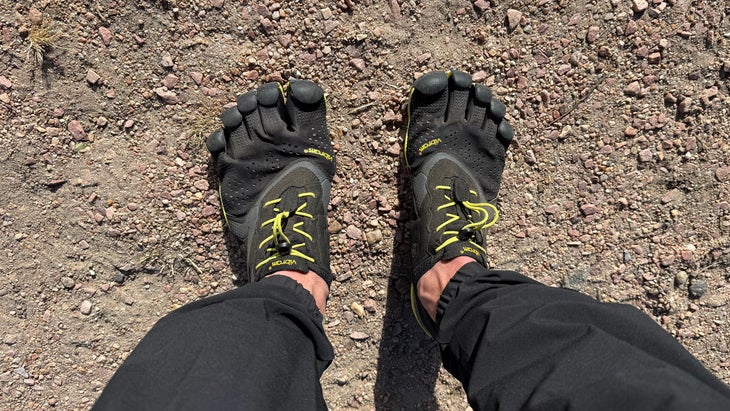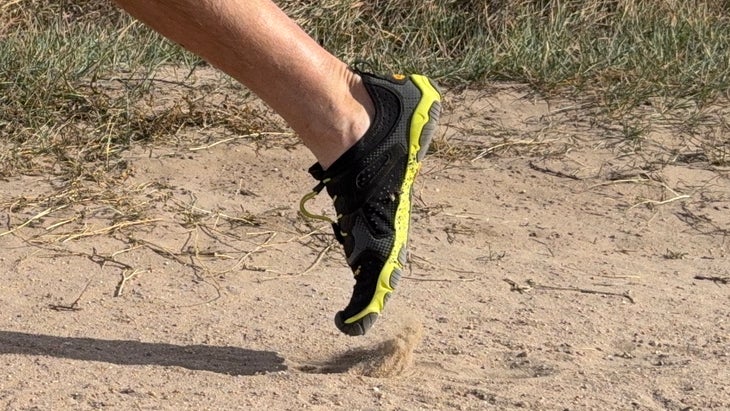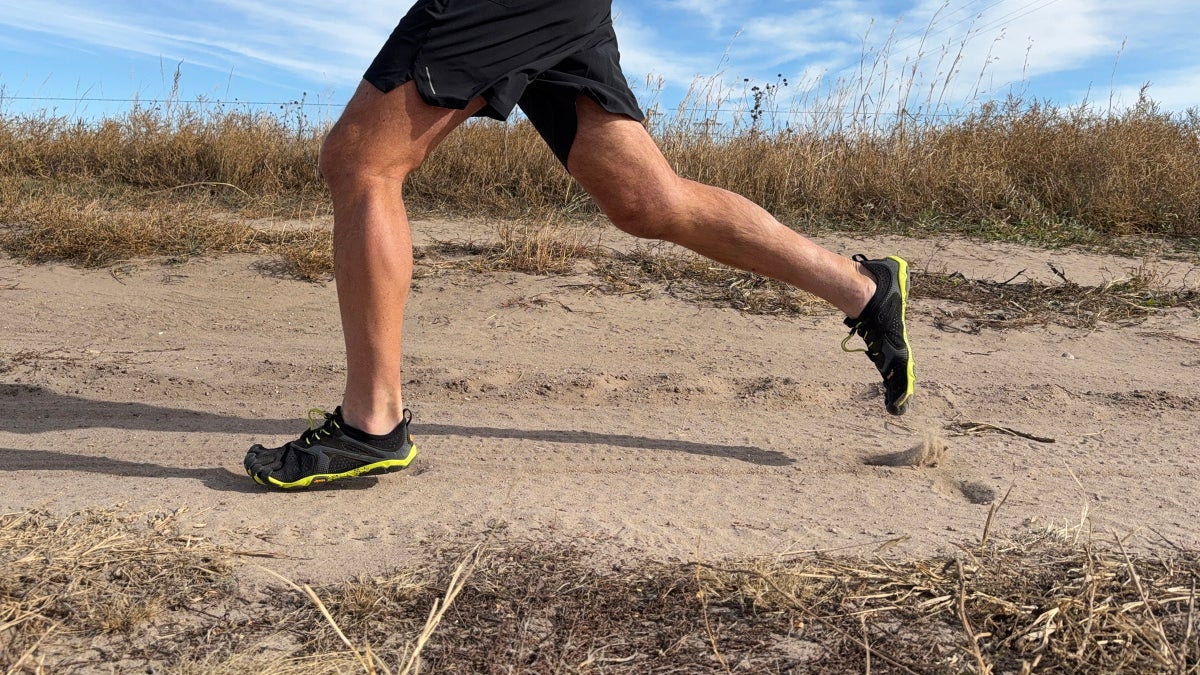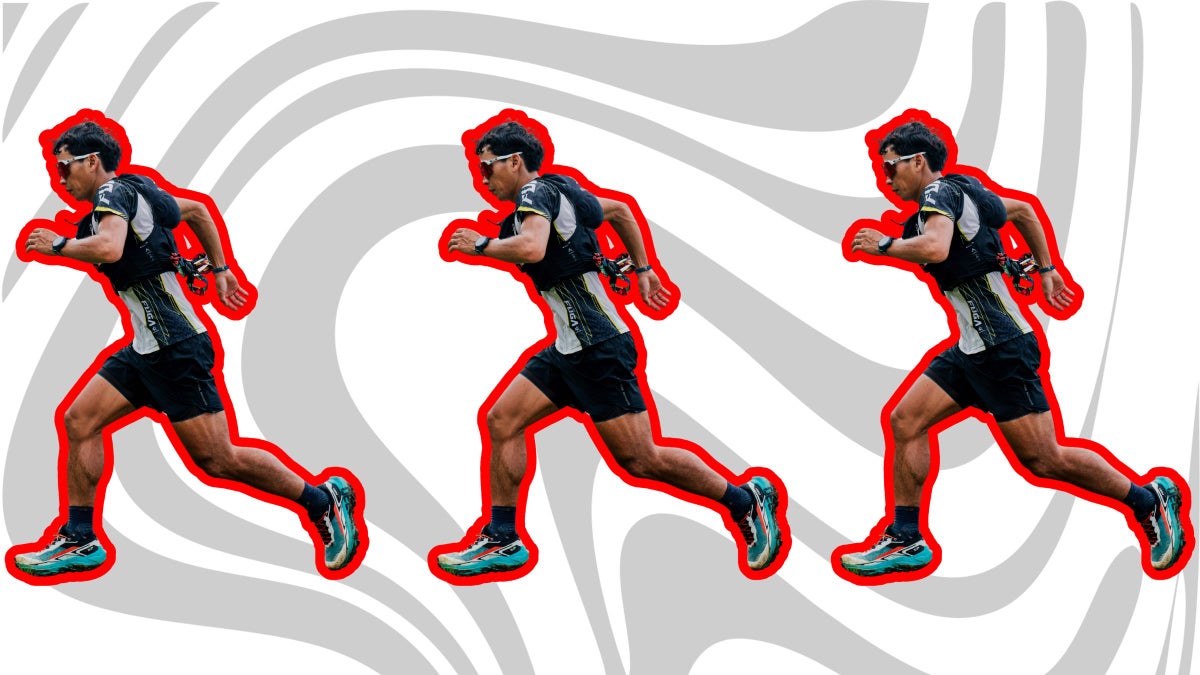
When I first saw the Vibram FiveFinger running shoe at the 2007 Boston Marathon expo, the frog-like toe shoes that most runners then thought were a joke made immediate sense to me. I’d long been a fan of lighter, flexible shoes and was fascinated by the barefoot-running roots of the world’s best distance runners from East Africa. At the time, emerging research showed that cushioned, controlling shoes got in the way more often than they protected and corrected. If mankind was born to run, we should be able to run barefoot, it seemed to me—and these shoes were as close to bare as most of us could safely get, their thin rubber sole standing in for the thick calluses we lacked from wearing shoes all our lives.
But it wasn’t the promise of a better stride and fewer injuries that primarily drew me to run hundreds of miles in FiveFingers in the years to come; it was how they made me feel. The barely there shoes reconnected me with my body and the earth. They made me pay attention and experience the run anew as a 40-something with three decades of daily training under my belt. Even my wife noticed the rejuvenating effect; I seemed to have a new spring in my step, emotionally as well as physically. “Pretty remarkable for a pair of shoes,” she said.
The FiveFingers made runs more vivid and memorable. I can still feel the mud between my toes as I scrambled along a lush trail in the Costa Rican jungle, the rhythm of soft, quiet footfalls as I explored western Nebraska’s sandhills, and the undampened power of grabbing the road as I outsprinted a teenager in a local 5K.

I enjoyed feeling free, alert, and connected so much I danced too far, too fast—and got injured, like many others. So many, in fact, got injured from ditching their cushioned running shoes that runners began to turn against the minimalist movement, which had promised too much. With the successful 2012 class-action lawsuit against Vibram related to false claims in advertising that the shoes could reduce foot injuries, the tide had completely turned. Minimalism was dead.
As shoe companies went back to building more cushioned shoes, I searched for common ground among diverse experts on what was true, not fad, about stride and shoes. What I learned is that shoes—whether minimal or maximal—have little effect on preventing or causing injury. Your strengths, mobility, and inherent movement patterns largely determine your stride, regardless of the shoe you run in. But podiatrists and physical therapists agree that what minimal shoes can do is strengthen your feet, alter the stresses of running, and help cue a more efficient stride after you’ve improved your mechanics.
Armed with this knowledge, I continued incorporating minimalist shoes into my rotation in the ensuing years, but even they got increasingly cushioned and mainstream. And, with so many innovative new trainers and super shoe racers to try, my Vibram FiveFingers languished in the back of a closet for years, until I eventually took them to Goodwill.
Recently, however, I gathered a collection of current minimalist shoes, including a pair of the surprisingly still-available Vibram FiveFingers. All of them have been a welcome change from today’s ubiquitous maximal models, none more so than the FiveFingers. From the moment I pull them on, my toes splay and my arches engage. Within a few minutes I’m running taller and more balanced; I’m landing beneath my body and turning over with a faster cadence; I can feel my glutes and calves activating, and the chronic pain in my right knee subsides.

I don’t do ten-mile runs in them anymore or wear them every day. What I do is, once a week, after a short warm-up, I run as fast as I can without straining until my cadence starts to fall off, then I walk until I feel like going fast again, and repeat for two miles. It ends up being roughly 10–12 x 200–300 meters at mile to 5K pace, with equal recovery times. With each rep I get faster, go further, and have more pep in my stride. The quicker cadence and more efficient mechanics carry over to subsequent days, no matter what shoe I wear, reducing my descent into an old-runner shuffle.
As much as I appreciate the improvements in my form, however, what I still love most about the Vibram FiveFingers is how I feel when running in them. I become an agile animal: light on my feet, in touch with the ground, instinctively reacting to every nuance, grabbing handfuls of dirt with my toes and throwing them back into the wind. For a few moments, I feel young, powerful, and alive.
Pretty remarkable for a pair of shoes.
The post Why I (Still) Love Vibram FiveFingers appeared first on Outside Online.














